The Indochinese piastre, issued by the Bank of Indochina, a private foreign entity backed by the French government, was the primary currency in Vietnam in 1945. Pham Van Dong, then Minister of Finance, was tasked by President Ho Chi Minh with issuing the Democratic Republic of Vietnam’s first independent currency.
This move aimed to assert financial independence, despite the national treasury holding a mere 1.23 million Indochinese piastres, with nearly 600,000 in unusable, tattered notes. Given the nascent independence and limited funds, the new currency was issued without a gold or silver standard.
With French occupation of Binh-Tri-Thien province dividing the country, and varying economic conditions between regions, three separate currency zones were established: North, Central, and South Vietnam.
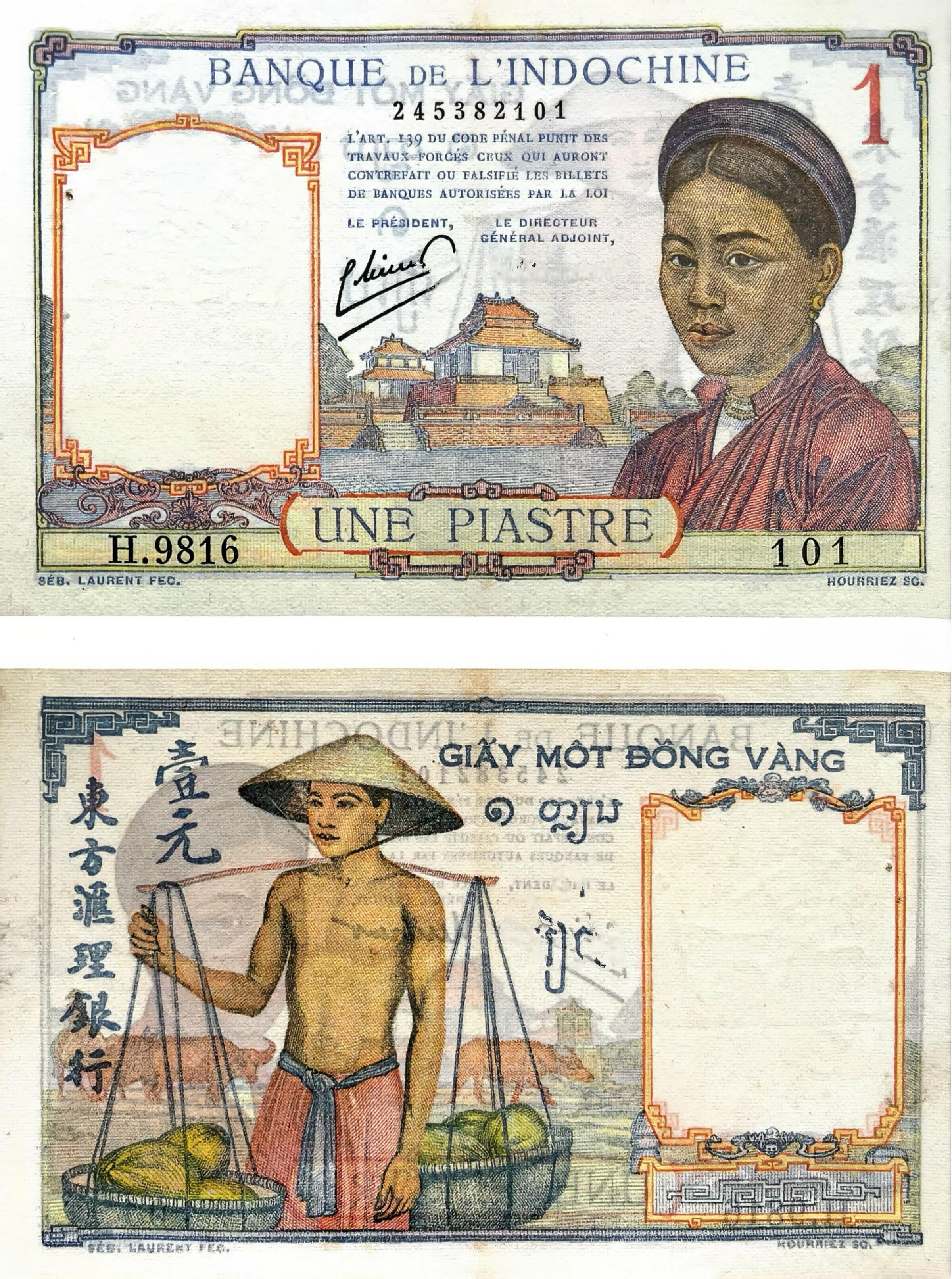 |
An Indochinese 1 piastre note in circulation from 1947-1954. (Source not provided) |
An Indochinese 1 piastre note in circulation from 1947-1954. (Source not provided)
In the North, the government quickly and discreetly printed "Viet Nam Bac Tai Chinh" (Vietnamese Financial Notes). Initial issues were aluminum and bronze coins in denominations of 20 xu, 1 hao, 1 dong, and 2 dong. In 10/1945, banknotes featuring President Ho Chi Minh’s portrait and the signature of the Minister of Finance were designed and printed, ranging from 2 hao to 500 dong. Variations in design and size occurred due to multiple printing locations and production runs.
The government purchased the Taupin printing house on Nam Bo street (now Le Duan street), renaming it "Viet Nam Quoc Gia An Thu Cuc" to conceal its operations.
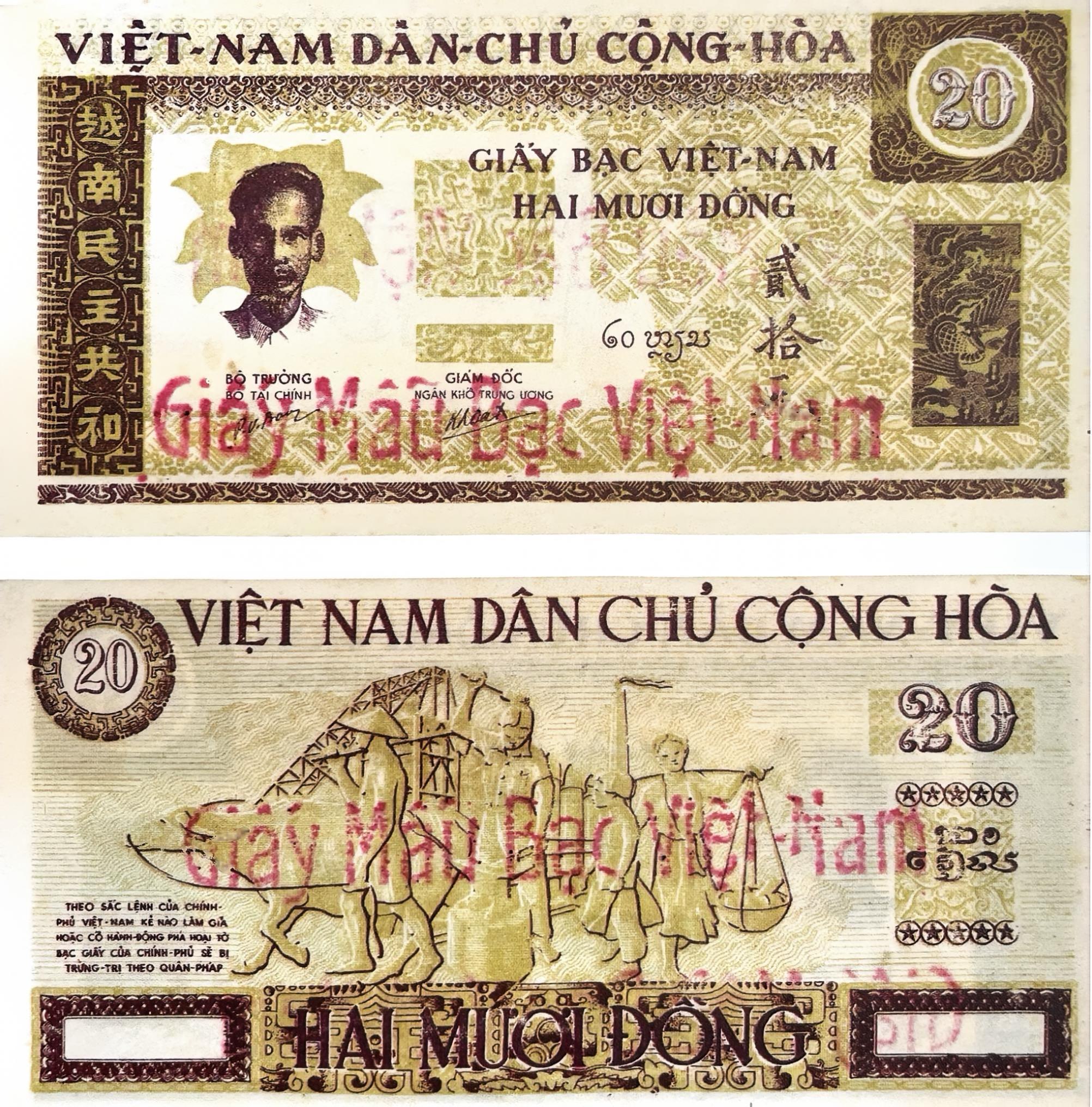 |
A 20-dong Viet Nam Dan Chu Cong Hoa note issued in North Vietnam. (Source not provided) |
A 20-dong Viet Nam Dan Chu Cong Hoa note issued in North Vietnam. (Source not provided)
Anticipating war with France, the government authorized Nguyen Van Tan, Director of Central Vietnam's Finance Department, to establish a special printing facility in the Central region. Initial printing occurred at the Ngo Tu Ha printing house in Hue. By late 1947, due to escalating conflict, operations moved to a remote jungle location accessible only by river and a 5 km trek through dense forest.
Given the difficult conditions, Interzone V (Quang Nam, Quang Ngai, Binh Dinh, and Phu Yen provinces) was authorized to issue "Tin Phieu Trung Bo" (Central Region Notes), bearing Pham Van Dong’s signature, which initially circulated alongside the national currency. Following a devaluation of the national currency in 1952, Interzone V withdrew it in favor of the "Tin Phieu."
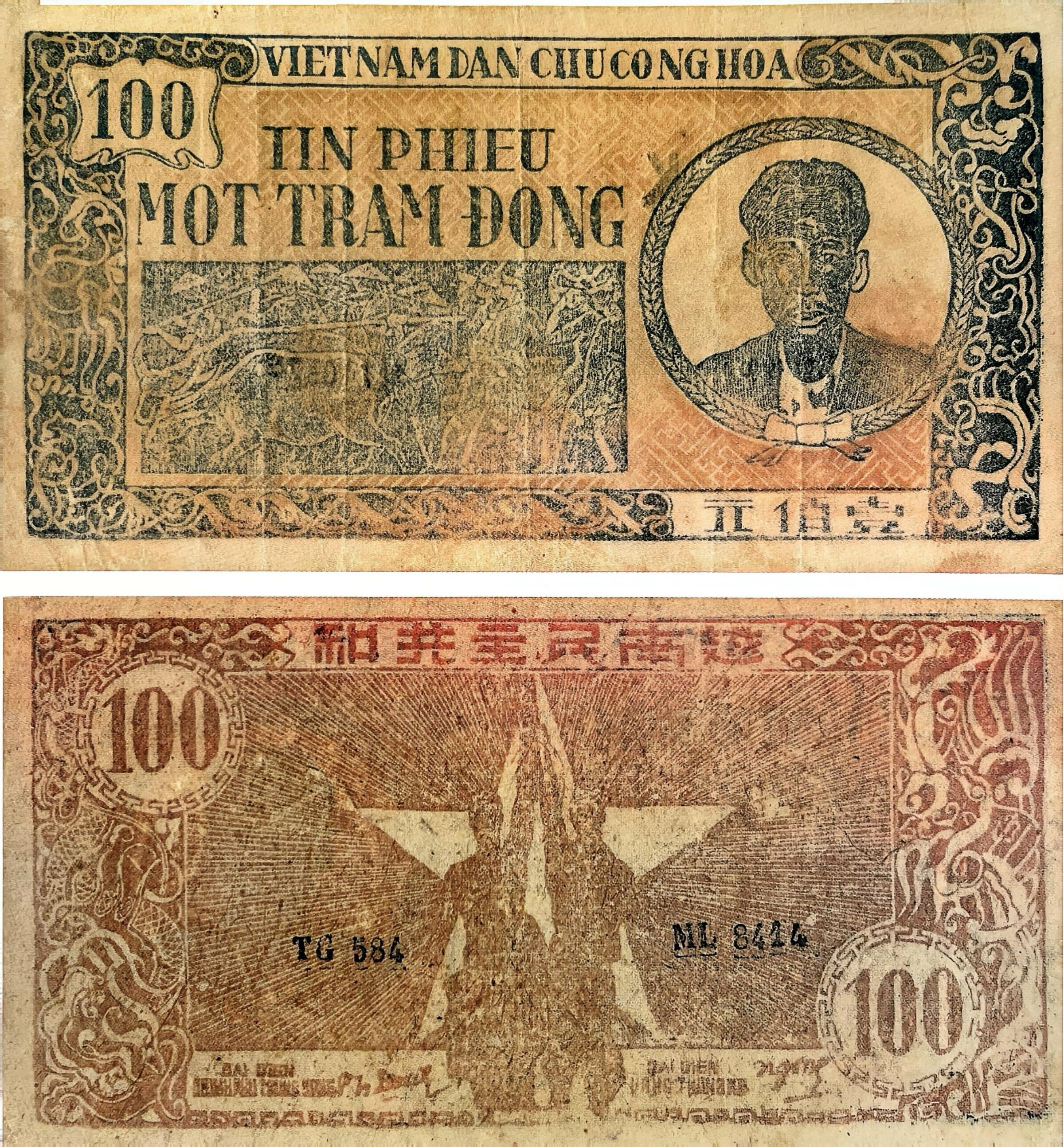 |
A 100-dong Tin Phieu note circulated in Central Vietnam, 1947-1954. (Source not provided) |
A 100-dong Tin Phieu note circulated in Central Vietnam, 1947-1954. (Source not provided)
Meanwhile, in the South, distance and challenging terrain hindered communication and support from the central government. Lacking resources to print its own currency, the Southern administration continued using French-issued piastres, leading to shortages and the practice of tearing banknotes in half for smaller transactions.
In 1947, the central government authorized the issuance of its currency in the South, featuring Ho Chi Minh’s portrait. Thus, multiple currencies co-existed in this region.
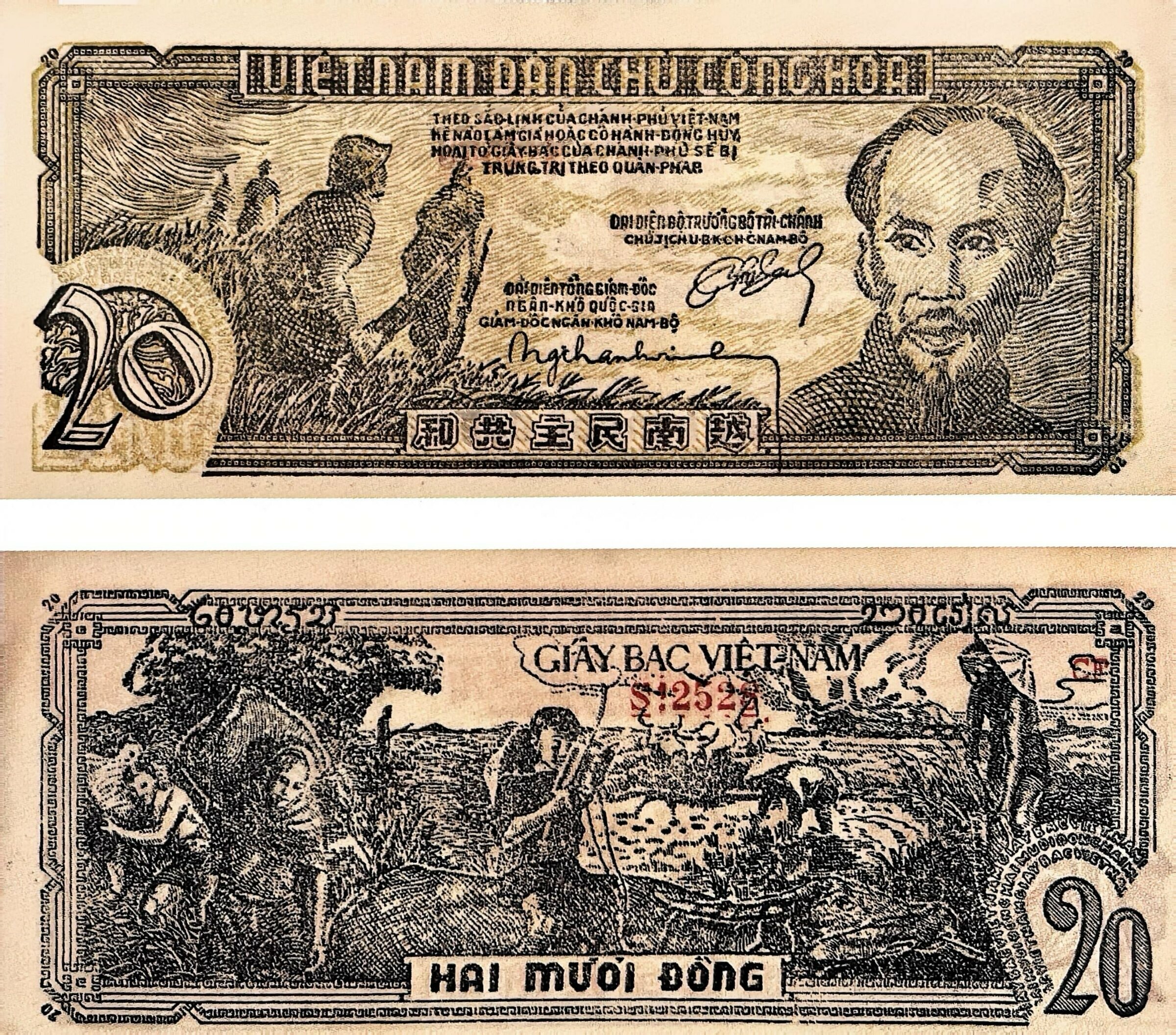 |
A 20-dong banknote, 1947-1954. (Source not provided) |
A 20-dong banknote, 1947-1954. (Source not provided)
From 1945 to 1950, three monetary systems operated within Vietnam. All banknotes, whether "Bac Tai Chinh," "Tin Phieu," or "Bac Nam Bo," featured imagery of Ho Chi Minh, soldiers, workers, and farmers, serving both monetary and propaganda purposes.
In 1950, a special printing operation in Central Vietnam began counterfeiting Indochinese piastres to combat French economic sabotage. This complex process involved meticulous paper and ink selection, precise plate-making, and artificial aging of the banknotes. The counterfeits were circulated in French-controlled areas, used for trade, and provided to resistance fighters.
The French responded by issuing a new piastre design. The counterfeiting operation ceased after nearly three years, having achieved significant success in the monetary war.
The French also attempted to undermine the Vietnamese currency through propaganda and by counterfeiting it. To counter this, 100-dong notes were issued with an official seal, known as "tien dap nen" (foundation money).
Some early economic policies, such as trade embargoes against French goods, proved counterproductive. Recognizing the need for economic exchange, the Southern Administrative Resistance Committee implemented new financial measures to stimulate production and trade, which stabilized and strengthened the Vietnamese currency.
On 5/6/1951, the National Bank of Vietnam was established, replacing the "Bac Tai Chinh" with "Bac Ngan Hang" at a 1:10 exchange rate. This marked Vietnam's first monetary reform, shifting from a treasury-based system to a credit-based system managed by the National Bank.
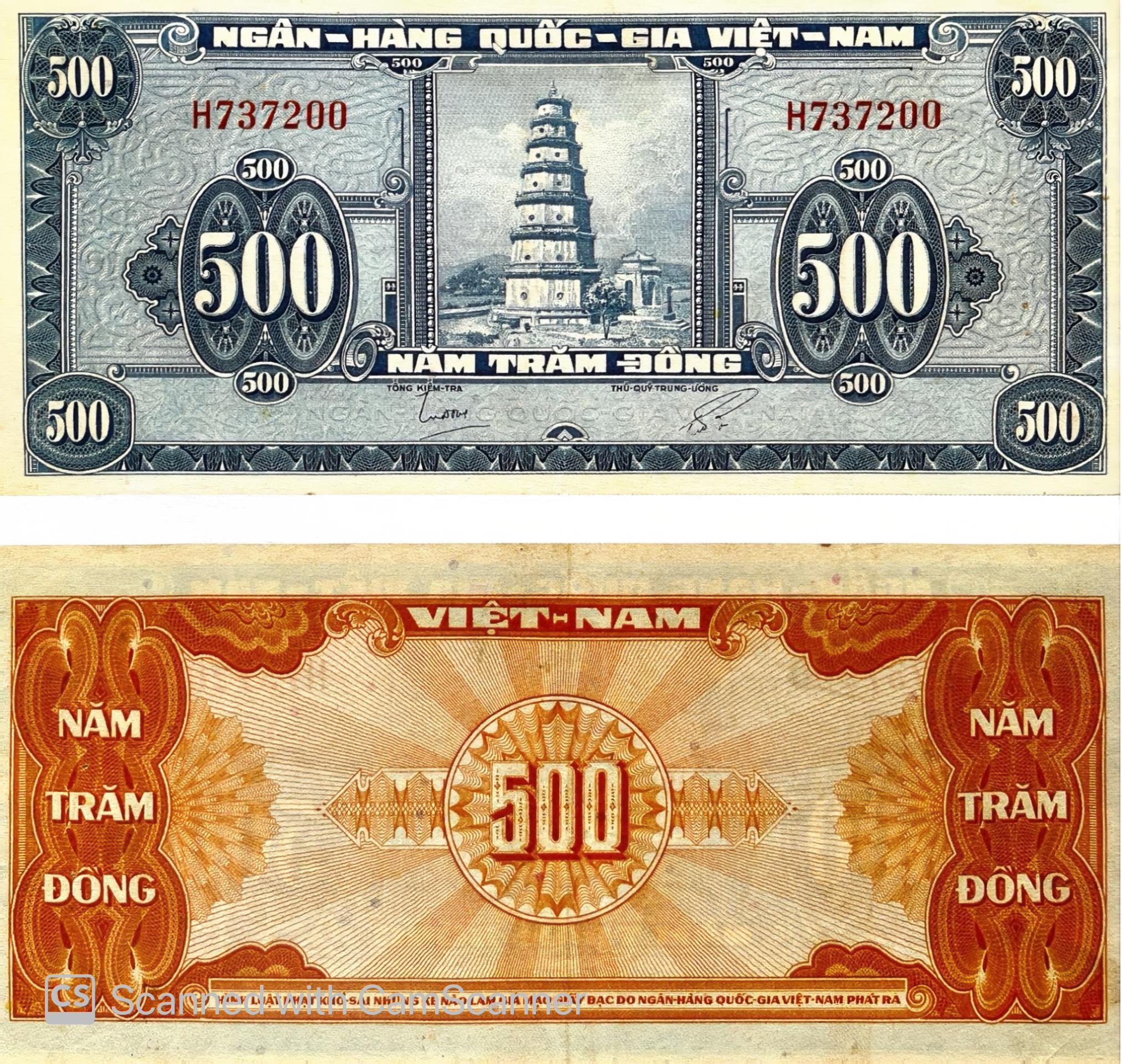 |
A 500-dong note issued by the National Bank of Vietnam. (Source not provided) |
A 500-dong note issued by the National Bank of Vietnam. (Source not provided)
The National Bank was established in Interzone V in 1952 and in South Vietnam in 7/1955. Following the Geneva Accords in 7/1954, existing currencies, including the "Tin Phieu," "Bac Nam Bo," and "Bac Tai Chinh," were withdrawn and exchanged for Indochinese piastres.
The issuance of these various currencies played a crucial role in Vietnam’s struggle for economic independence from France, marking the development of its financial system.
Quynh Trang
Sources:
*Dong Bac Tai chinh, Dong Bac Cu Ho (Ministry of Finance)
*Lich su Dong tien Viet Nam (State Bank of Vietnam)












